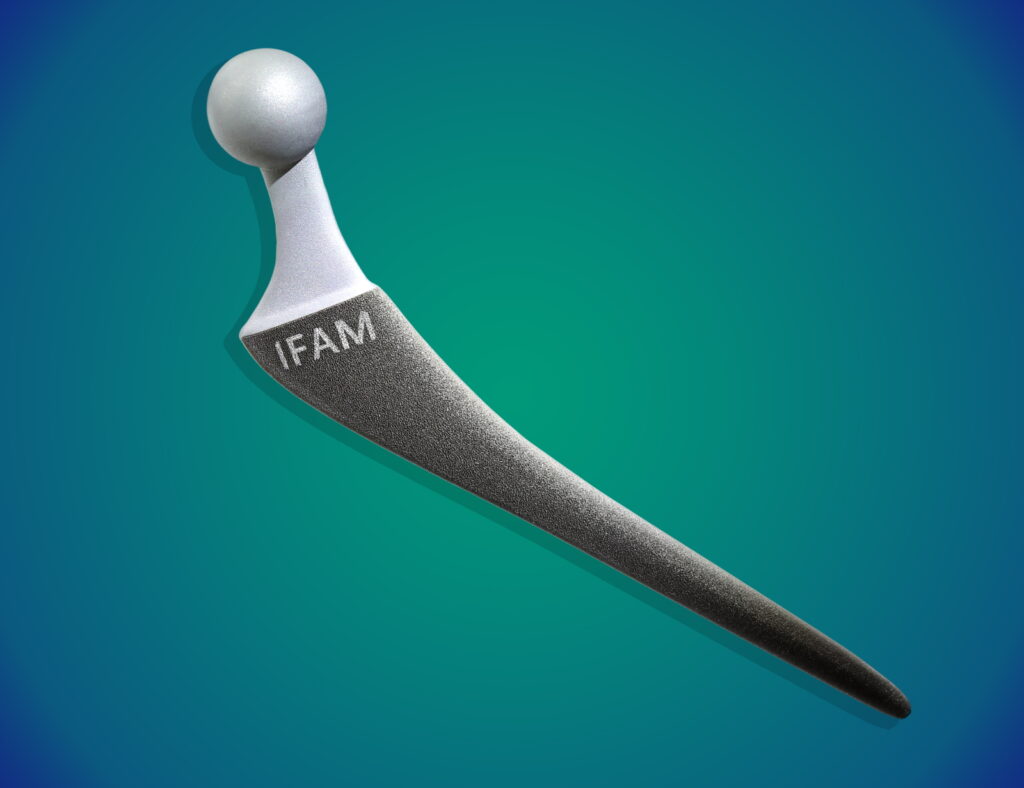A hybrid implant coating made from antibacterial silver and an antibiotic will protect patients from infection in the future. The antibiotic is tailored to the patient’s unique requirements for even better protection. The AntiSelectInfekt project came about in collaboration with a research team from Charité-Universtitätsmedizin Berlin.
Anyone who now receives an artificial knee, shoulder or hip joint at the hospital can expect the best-possible treatment and cutting-edge medicine. But implantation is not without its risks. On average, 1 to 2 percent of all patients will develop an infection following the operation. If the level of discomfort is so severe that another surgery is necessary, an infection can be expected in up to 4 percent of all cases 1. Even if the individual risk is in the lower percentage range, it affects many patients due to the frequency of the surgery. In view of demographic developments, the number of prosthesis operations will also increase steadily. If the antibiotics administered do not help, it could be a long and painful process. And if worst comes to worst, the implant will have to be replaced. This new approach promises to significantly reduce the risk of infection. A hybrid coating consisting of antibacterial silver and an antibiotic that is tailored to the patient’s requirements or more precise to the bacteria is applied to the implant. The idea was developed four years ago at the Fraunhofer Institute for Manufacturing Technology and Advanced Materials IFAM in Bremen. Kai Borcherding, Head of Medical Technology and Life Sciences at Fraunhofer IFAM, says: “Surface treatment is one of the areas our institute specializes in. Applying this expertise to medicine was a natural choice.” Fraunhofer researchers further developed, tested and implemented this idea through the AntiSelectInfekt project in collaboration with researchers of the Julius Wolff Institute and the BIH Center for Regenerative Therapies (BCRT) of Charité in Berlin. The results are promising. “The preclinical studies have demonstrated that the hybrid implant coating effectively reduces the rate of infection,” explains Prof. Britt Wildemann, who is in charge of the studies on effectiveness and biocompatibility in Berlin and is now Head of Experimental Trauma Surgery at Jena University Hospital. The idea of coating implants is not necessarily new. The ability of silver and antibiotics to combat infections associated with implants has long been studied. What is new, however, is the approach of combining the two and thus vastly improving active protection against bacteria. But the benefits do not end there. Researchers have developed a process that allows them to use an antibiotic tailored to the patient’s requirements. The special coating technology developed by Fraunhofer IFAM also regulates release of the antimicrobial substances: while the antibiotic is released in full once the implant is in place, the silver particles take effect gradually close to the surface over a longer period of time, thus providing lasting protection that continues into the healing phase.
Made in Bremen: coating technology with laser
The coating process is based on tried-and-true technologies further developed specifically for the project. “The first step is to apply a structure to the surface of the titanium implant using a laser. This creates a porous layer,” explains Borcherding. Tiny pores that are mere micrometers in size and invisible to the naked eye appear on the titanium surface. These pores are amphora-shaped, meaning they are narrower above and wider below. In the second step, researchers use the process of physical vapor deposition to apply a layer containing silver particles.
These amphora-shaped pores can be filled during the surgery. Just before implantation, the surgeon immerses the sterile implant with silver coating in a solution containing the antibiotic.




